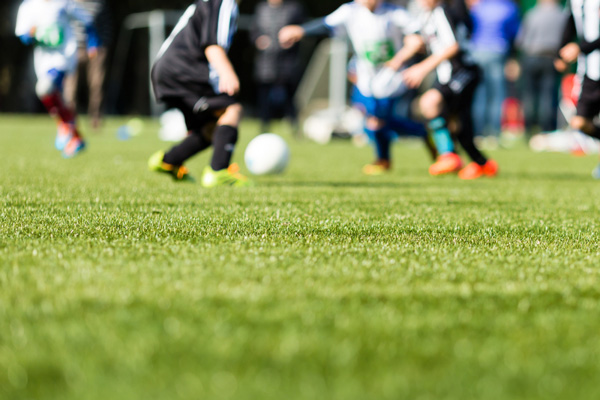
Sierra Club CA has just issued a policy against the use of synthetic turf. Why?
Synthetic turf:
- is harmful, especially to aquatic organisms,
- is made up of "forever chemicals" (PFAs) that build up in the environment and eventually in human tissue.
- is NOT recyclable, despite industry claims. Old turf ends up in landfills, for as long as plastic remains, which is longer than any of us.
- can kill trees when installed around them
- contributes to Nature Deficit Disorder, a growing concern for our children.
- gets hotter than asphalt on a hot day, up to 140 degrees; hotter than surrounding buildings and streets, as shown on the heat map below.
Example: Note the synthetic turf playfield on this heat map

Synthetic turfs are failing
What may have seemed like a good idea at the time has proven to be a disaster as synthetic turf fields start failing.
Drought-tolerant natural options exist!
We can have natural turf fields and not put more plastic and toxic chemicals into our environment and our kids' bodies!
Alternatives to synthetic turf include different types of grasses that grow short, with deeper roots. Natural grass is clean, allows water to infiltrate into the ground, is safer for players, and there are natural turfs that are drought-tolerant.
For information on how different turfs can be drought-tolerant and hold up to sports activities from a California-based company, see: https://www.deltabluegrass.com/meet-the-team/steve-abella/
Additional information here on the chemicals in artificial turf:
https://theintercept.com/2019/10/08/pfas-chemicals-artificial-turf-soccer/
https://theintercept.com/2019/10/08/pfas-chemicals-artificial-turf-soccer/
LEARN MORE with these links
Testing results for FieldTurf Vertex installed June 2021 in Portsmouth, NH
And here is an analysis of those findings by analytical chemist extraordinaire, Kristen Mello. Spoiler alert: 12 PFAS chemicals were found in the plastic grass carpet alone! And now we also have confirmation of it in the walnut infill (SafeShell).